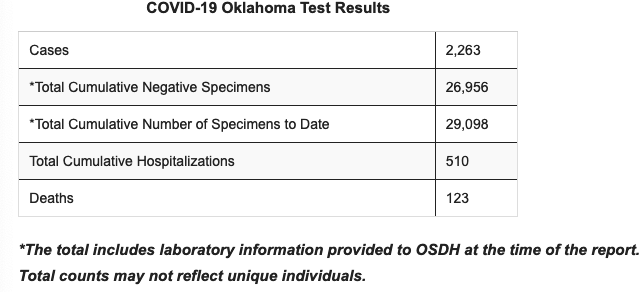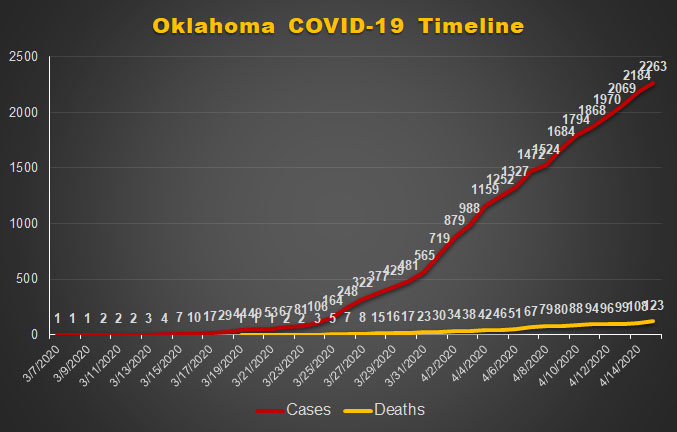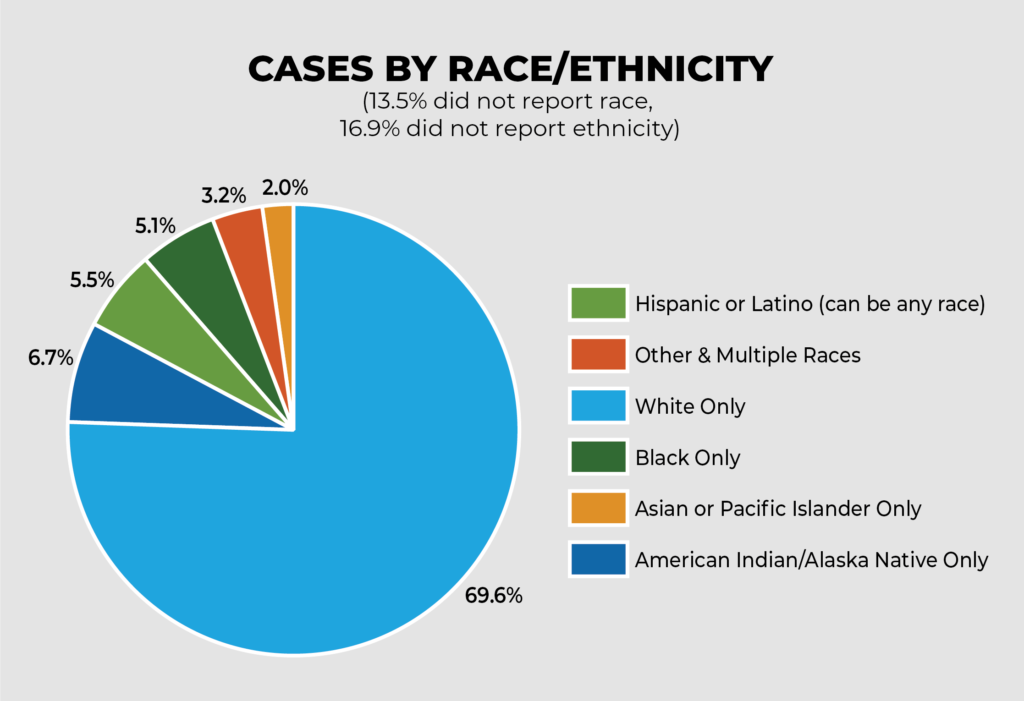Last Updated on April 15, 2020, 1:49 PM | Published: April 15, 2020
Deaths and infections from COVID-19 are no longer just an urban concern as the Oklahoma State Health Department reports new numbers and where they are coming from.
As of 7:00 a.m. Wednesday, April 15, 64 out of 77 Oklahoma counties show infection cases.
Out of those, 28 counties show deaths from the disease so far ranging across the state from Texas County in the panhandle to Latimer County in the southeast.
COVID-19 has come Oklahoma, not just its cities.

Here are the overall statistics from the OSDH Wednesday, April 15:


Cities still concerned
Oklahoma County still leads the way on numbers of cases and deaths among Oklahoma’s counties. Wednesday’s report showed that Oklahoma County has had 483 cases with 22 deaths.
Tulsa County is the next highest with 362 cases and 21 deaths.
Cleveland County that includes Norman in the extended OKC metro is the third highest with 294 cases and 18 deaths.
Disaggregated data
In their daily report Wednesday, OSHD showed even more disaggregated numbers as the agency struggles to get an accurate statistical handle on the situation in Oklahoma.
The OSHD been working to get accurate testing information from private labs that were not reporting negative tests at first with eventual success.
Now, they have been working with tribes and other entities to collect data on deaths from the disease adding 11 deaths to their records that occurred from April 3 through April 13.
Four more deaths were added to the count that occurred in the last 24 hours totalling 15 added to the count in the Wednesday report.
Racial-ethnic backgrounds
Now the OSDH is reporting racial and ethnic background of COVID-19 cases.
Concerns continue to grow nationwide about the number of Black people who are suffering disproportionately mainly due to such a high percentage of that demographic working in essential jobs such as nursing and emergency response.
This is the racial/ethnic background reported Wednesday. As noted, 13.5% of reported cases did not report race and 16.9% did not report ethnicity.

According to Census data from 2013, Oklahoma’s racial and ethnic divisions were as follows
- White: 65%
- Black or African American: 10%
- Native American: 6%
- Asian: 2%
- Pacific Islander: 0.1%
- Two or more races: 5%
- Ethnicity – Hispanic or Latino: 11%
Founder, publisher, and editor of Oklahoma City Free Press. Brett continues to contribute reports and photography to this site as he runs the business.










